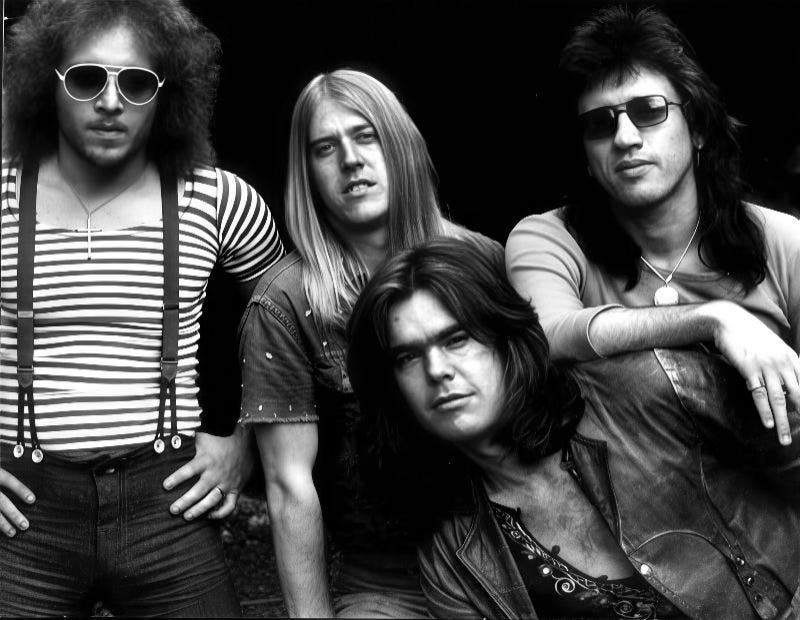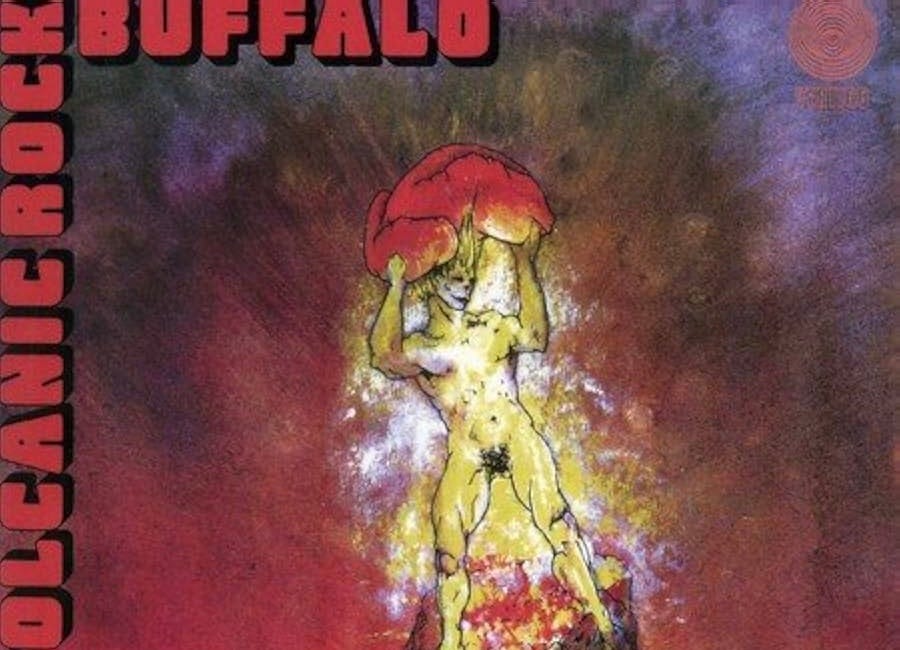Buffalo | History of the Band
Australia’s heaviest kept secret, Buffalo forged a crushing sound in the 1970s—fusing bluesy swagger with proto-metal thunder that predated doom and stoner rock by decades.
Buffalo’s role in shaping the foundation of Australian heavy metal cannot be overstated. Although overshadowed by their contemporaries, their fierce, blues-soaked sound was a significant precursor to the hard rock explosion led by bands like AC/DC. Emerging in 1971, Buffalo embraced a heavier, dirtier sound than most, which makes them a crucial—if often overlooked—puzzle piece in the global evolution of heavy music.
Formation and Early Years
Buffalo’s origins lie in the Brisbane blues-rock scene, forming from the remnants of the band Head. Led by vocalist Dave Tice and bassist Peter Wells, the group relocated to Sydney and adopted the name Buffalo to escape their previous band’s associations with psychedelic drugs.
Inspired by bands like Cream, Led Zeppelin, and Black Sabbath, Buffalo stood out for their darker, heavier riffs. However, according to guitarist John Baxter, they never consciously modeled themselves after Sabbath. “It was more about capturing the essence of British heavy rock,” Baxter stated.
Buffalo released their debut album Dead Forever… in 1972 under Vertigo Records, becoming the first Australian band signed to the prestigious label known for its progressive and heavy acts.
This artist will be featured in a future Dig Me Out podcast episode. Each month, our Patrons are presented with a selection of albums suggested by listeners and asked to vote for their favorite.
Musical Style and Evolution
From the outset, Buffalo distinguished themselves with their gritty sound and bold visual aesthetics. Their heavy blues style, combined with elements of proto-metal, aligned them more with bands like Sir Lord Baltimore and Leaf Hound than with commercial rock acts. However, as the decade progressed, Buffalo sought to streamline their sound for broader appeal, pivoting to a more radio-friendly hard rock style by 1976’s Mother’s Choice.
Their second album, Volcanic Rock (1973), remains a cult favorite, celebrated for its uncompromising rawness. Tracks like “Sunrise (Come My Way)” and “Shylock” were heavier, grittier, and more aggressive than anything coming out of Australia at the time.
Provocative Imagery and Album Artwork
Buffalo pushed boundaries with their album covers. The Volcanic Rock cover—depicting a woman as a menstruating volcano—caused controversy, while Only Want You for Your Body featured a graphic image of a chained woman on a torture rack. The band’s decision to incorporate shock value in their imagery alienated mainstream audiences but resonated with the underground rock scene.
Peter Wells reflected on this, noting, “We wanted to get a reaction, and we did.” The shock tactics mirrored Buffalo’s live performances, which were chaotic and powerful, if sometimes divisive.
Discography and Notable Albums
Throughout the 1970s, Buffalo released several albums that, despite limited commercial success, became cult classics.
• Dead Forever… (June 1972): Their debut album, produced by Spencer Lee and released under Vertigo Records, featured a controversial cover depicting a mournful, blood-soaked face peering through the eye socket of a skull. The album sold approximately 25,000 copies, a notable achievement given the band’s limited radio airplay.
• Volcanic Rock (July 1973): This album showcased a raw and unrefined heavy metal sound, with a cover art featuring a graphic depiction of the female form as a menstruating volcano. The album’s unapologetic crudity was intentional, reflecting the band’s commitment to a primal sound.
• Only Want You for Your Body (June 1974): Continuing their trend of provocative artwork, this album’s cover displayed an obese, screaming woman shackled to a torture rack. Musically, the band honed their songwriting into more focused and compact heavy rock nuggets.
• Mother’s Choice (March 1976): Marking a shift towards a more traditional hard rock sound, this album aimed for greater radio appeal. However, some critics felt that the music dragged rather than seized the moment.
• Average Rock ‘n’ Roller (July 1977): The band’s final studio album attempted a more commercial sound but lacked the coherent direction of its predecessors. Despite its title, some reviewers considered it well above average, leaning more towards rock than the blues/boogie-fueled style of earlier works.
During their active years, Buffalo remained largely underground, with minimal radio play and limited support from major venues. However, they laid the groundwork for what would become Australia’s signature hard rock and pub rock scene.
Buffalo’s influence reached bands like AC/DC and Rose Tattoo, with Peter Wells going on to co-found the latter. The band’s uncompromising ethos was ahead of its time, paving the way for metal’s embrace of heavier, more rebellious sounds.
As noted by Louder Sound, Buffalo was “doing heavy metal before most people had even heard the phrase.” Despite this, they remain largely unrecognized outside of hardcore music circles. Their audacious imagery and feral sound made them the antithesis of polished rock acts, yet it is precisely this rawness that makes their legacy enduring.
Influence and Legacy
The band’s enduring impact lies in their commitment to heaviness, paving the way for a distinct Australian metal sound. Buffalo influenced not only the pub rock circuit but also future metal acts worldwide. Bands such as Electric Wizard and Kyuss have cited Buffalo as a formative influence in shaping doom metal and stoner rock genres.
Peter Wells’ subsequent success with Rose Tattoo brought some Buffalo DNA into broader public consciousness. As Rose Tattoo frontman Angry Anderson once said, “Buffalo paved the way for bands like us to be dirty, raw, and real.”
Buffalo may never have achieved mainstream recognition, but their contributions to heavy metal’s DNA are undeniable. Their albums, especially Volcanic Rock, remain underground classics, celebrated by die-hard fans of proto-metal.
Revisiting Buffalo’s discography today offers a reminder of an era when rock was raw and rebellious—before it became polished for mass consumption. They were the dirty, heavy, unapologetic underdogs of Australia’s rock scene, and their legacy continues to echo through the amps of modern metal bands.
Buffalo - Volcanic Rock | 70s Rock Revisited
In this special crossover episode, we’re spotlighting Buffalo’s 1973 Volcanic Rock—a raw, proto-metal gem that helped shape the sound of 80s Metal and 90s Rock. With primal riffs and fearless energy, Buffalo laid the groundwork for the heaviness embraced by bands like Metallica and Soundgarden.
Sources
Louder Sound - Were Buffalo the Original Aussie Heavy Metal Band?
Classic Rock History - Buffalo Albums Ranked





Great to see the under-the-radar, mega riff-heavy Buffalo on these wires! I own both 'Dead Forever' and 'Volcanic Rock' on LP and over the years have turned countless people on to both records. 'Volcanic Rock' is outrageously good from start to finish, and I can’t imagine any fan of 70s rock, Sabbath, heavy rock across all decades, or metal not digging it.
When in Brisbane: 2018, Riley Hawk had just played an in-store @ Sonic Sherpa with his band Petyr, and Melbourne’s big riffing, Grim Rhythm. Following the show, apart from rolling on a few curbs in the laneway beside the store, Riley browsed the store and bought an original pressing of a Buffalo album - I don’t recall which one. It shows Buffalo were still impacting young bands 40+ years after their last record. I bet Riley was stoked to score the record while in Brisbane of all places too.